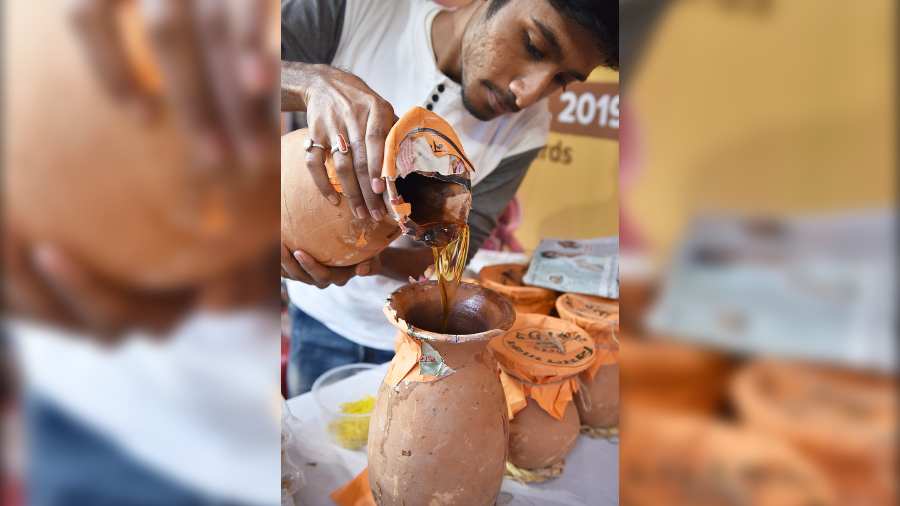The sliding mercury promises to make nolen gur tastier.
Manufacturers of gur or molasses say the lustre and flavour of nolen gur, which gives the essence and colour to sweets of various forms during winter across West Bengal, improve markedly with a sharp slide in the Celsius.
The gur is made of sap of date palm trees, which is collected early in the morning and brought to boil laboriously, preferably on earthen ovens with wooden planks as fuel, by trained hands.
Collectors usually target middle-aged date palm trees — 10 to 15 years old — for the sap, which deposits in earthen pitchers tied to the stump through the night.
Agriculture scientists said the production of sap by trees is directly related to temperature and humidity. The colder it gets, the more homogeneous is the sap.
For most of December, many sweet shop owners used a solidified form of the jaggery — patali gur — to make up for the shortfall in the supply of nolen gur.
With the drop in temperature, most have returned to making mishti with liberal doses of nolen gur.
“The quality of the sap till December was not up to the mark. The cold wasn’t biting enough and the trees didn’t offer a good yield. The January temperatures have changed the quality and texture of the sap,” said Satyajit Burman of Majdia in Nadia, one of the largest nolun gur-producing districts in West Bengal.
At Mithai, the sweet shop that has several branches, the owners have started scaling up their demand for nolen gur to replace the use of patali.
“The quality of nolen gur that has started reaching us now is game-changer,” said Nilanjan Ghosh of Mithai. “We have increased our orders to suppliers from Murshidabad and South 24-Parganas.”
Good sap requires less boiling for the production of nolen gur, manufacturers said.
“We source our gur from Hanskhali in Nadia. We will now be getting gur of fabulous quality, which we have not been receiving for some time,” said Partha Nandy of Girish Chandra Dey and Nakur Chandra Nandy, the 174-year-old sweet shop in north Kolkata.
A light yellow syrup with the right essence is a delight for most sweetmeat makers.
“The colder it gets, the longer is the period the essence and flavour of nolen gur remain intact,” said Sudip Mullick of Balaram Mullick and Radharaman Mullick sweet shop. “Good nolen gur dramatically improves the taste of rosogollah and sandesh made with it.”
Almost all sweet shops in Kolkata The Telegraph spoke to said they had asked nolen gur producers in districts such as Murshidabad, Bankura and South 24-Parganas districts to step up their supplies.
